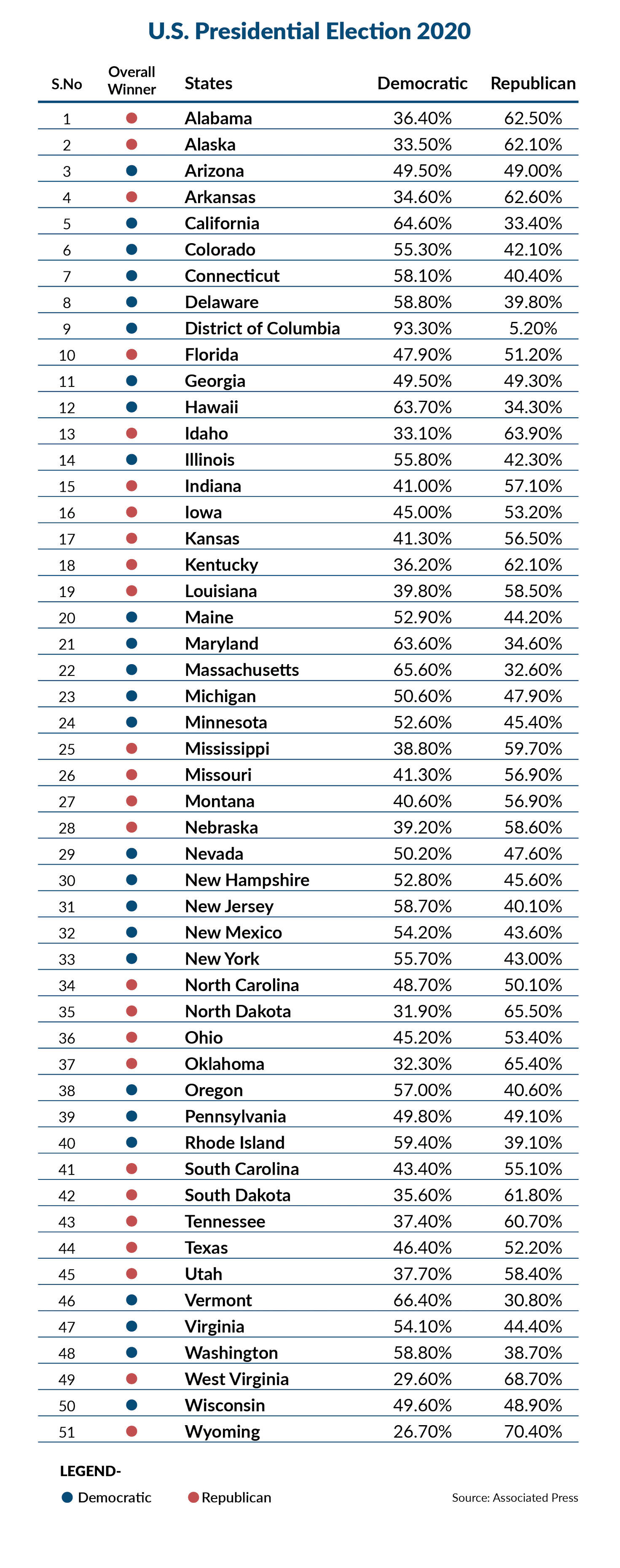Swing or battleground states in the United States election refer to highly competitive states which historically “swing” between voting for different political parties in presidential elections. Out of the 50 states in the US, 38 vote consistently for the same party (2000-2016). In the United States unlike other countries where governments are elected on a basis of popular votes, a system called the electoral college is used. The electoral college is a body of delegates from each US state, and when any American casts a vote, they are actually voting for who their state will vote for. Perhaps the most important thing to note about the electoral college is that the candidate with the highest number of votes in a state claims all the electoral votes of the state. Due to the electoral college system present in the United States, states are the most important jurisdictional unit in voting.

The electoral college nearly always operates with a winner-takes-all system, in which the candidate with the highest number of votes in a state claims all of that state’s electoral votes.
Because of this, swing states receive a lot of attention from political parties, candidates and political analysts as often they play the most important role in determining the result of an election.
In the 2016 election, Donald Trump secured his victory by winning 6 out of the 10 most competitive swing states. In 2020, as per most pollsters, the swing or battleground states were likely to be Arizona, Florida, Georgia, Iowa, Maine, Michigan, Minnesota, Nebraska, Nevada, New Hampshire, North Carolina, Ohio, Pennsylvania and Wisconsin. Out of these states, as per the Cook Political Report Arizona, Florida, Michigan, Pennsylvania, Wisconsin and North Carolina would be the most important in determining who wins the 2020 presidential race.
With 15 electoral votes, the state of North Carolina was historically a Republican stronghold, however, over the years it has showcased a shift in voting patterns similar to national trends of polarization. While cities in the state swing Democratic, rural areas in the state tend to swing towards the Republicans. In 2016, Trump won the state by 3.7% while this time, he won the state with a much smaller margin of 1.4%. Biden secured 48.7% of the votes in the state.
In the state of Arizona in the past 72 years, only two Democrats have won, Bill Clinton in 1996 and Harry Truman in 1948. However, due to the increasing number of Hispanic voters in the state, it has become a battleground for parties. While in 2016, Trump won the state by 3.5% points, Biden won the historically Republican state by a razor-thin margin of 0.5% (11 electoral votes).
With 10 electoral college votes, the state of Wisconsin has usually been a democratic state (although with narrow margins at times). However, in 2016, Trump managed to flip the state, securing his victory by a narrow margin of 0.77% points. In 2020, the state sided with Biden and the democratic party, who secured his victory with a margin of 0.7%.
The state of Pennsylvania, with 20 electoral votes had voted for Democrats in six consecutive elections before Trump’s victory in 2016. Trump managed to flip the state in 2016, securing his victory with a margin of 0.7%, however, failed to win it again in 2020. Co-incidentally, Biden also secured this state in 2020 with a margin of 0.7%.
In 2016, Trump won the state of Michigan by a margin of mere 0.2% points, which was the narrowest margin of any state. With 16 electoral college votes, before 2016, the state voted Democratic in the past six elections. Biden won the state in 2020 with a 2.6% margin. With 29 electoral college votes, Florida is the swing state with not only the most electoral college votes but also the highest population. Out of the past 17 presidential elections, Florida has voted Republican in 12 elections. What is interesting to note is that since 1964 Florida has voted with the eventual winner of the presidential election in all elections except for 1992 (not including 2020). In 2016, Trump won the state with 0.2%, while in 2020 Biden secured the state with a margin of 2.7% points.



